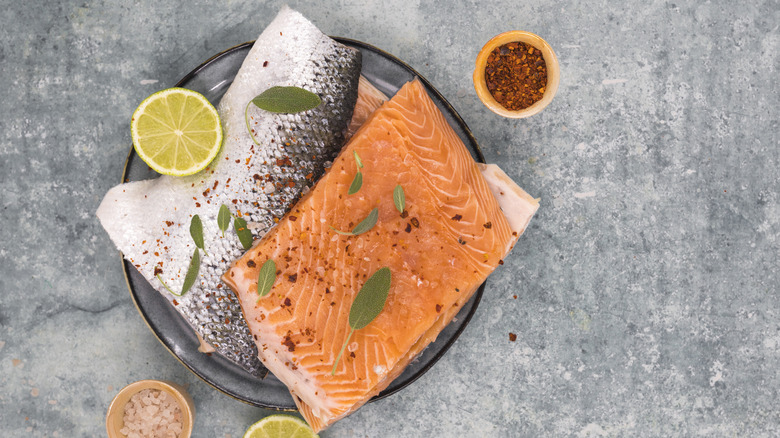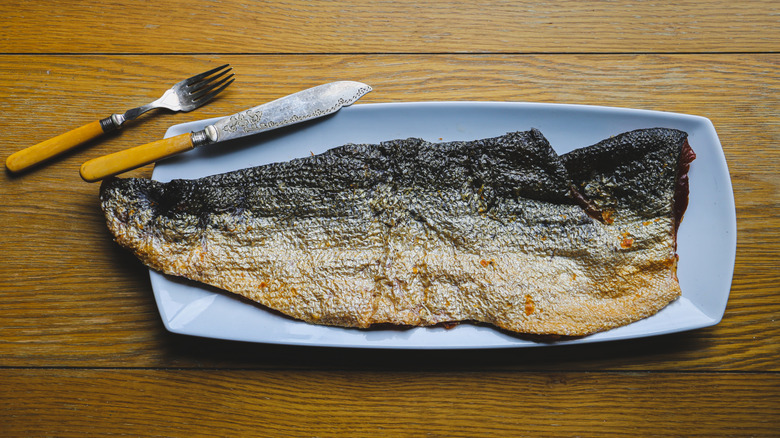You Should Probably Avoid Eating The Skin From These Types Of Fish
Fish skin often gets left on the plate at the end of a seafood feast, but there are plenty of great reasons to eat this frequently ignored part of the fish. Most fish skins are not only totally edible, they're also super nutritious — packed with healthy omega-3 fatty acids, vitamins D and E, and collagen. Not to mention, flavor-packed, crispy-crackling fish skin is hands-down the tastiest part of a good skin-on grilled salmon. However, not all fish skins are quite so delightful. Here's a quick rundown on which fish skins to savor and which to skip.
First of all, always ask your fishmonger to descale your fish if you're planning to eat the skin – most fish scales are unpleasant and even unsafe to eat, and the skin is much easier to cook after the fish has been scaled. Once the fish is cleaned and descaled, most fish skins are perfectly safe to eat. However, the skins of some types of fish are best avoided simply because they don't taste very good to most humans.
Tuna, swordfish, and monkfish skins are notoriously tough and unpalatable. Skate skin has thorny barbs and shouldn't be consumed. Additionally, the skins of slimy fish such as catfish and eels (which you really shouldn't be ordering anyway) are best avoided as they tend to be rubbery and unappealing.
Are any fish skins dangerous to eat?
From a food safety perspective, the skins of most properly sourced commercial fish are perfectly edible (even though some might not taste so pleasant). However, while choosing high-quality fish from a trusted source is always a good idea, it's especially vital if you're planning to enjoy the skin. Fish skin is — as you might expect — highly exposed to the environment. Potentially harmful antibiotics, pollutants, and contaminants can accumulate in the skin of any type of fish.
The FDA advises that contamination levels in commercial fish are typically not concerning for human health. However, if you're cooking up a fresh catch from a recreational fisher, it's critical to ensure it was caught in clean waters — you can check fish advisories online using the EPA's National Listing of Fish Advisories. If you're unsure if there could be any chemical pollutants present, it's advisable to remove the skin, fat, and organs before cooking the cleaned fish.
Fish skin is usually a delicious and nutritious treat, but if you have any doubts, it's best to err on the side of caution and skip the skin. Luckily, you can remove salmon skin in an instant with boiling water – or just do it the old school way, with a sharp knife.

